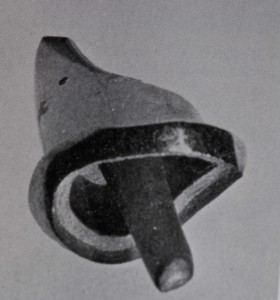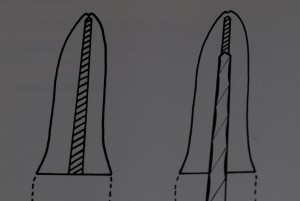“Any major dude will tell you.”
-Steely Dan – Pretzel Logic
Control the Forces with Ferrule Bevel
Ferrule Design and Fracture Resistance: State of the Art
“Do it right the first time.”
This picture represents a “butt joint” not a ferrule bevel – this design easily can fracture teeth when built into the “all” porcelain crowns, those without precious metal substructures. Porcelain biting surfaces should be frequently checked after cementation as the porcelain does not wear down like natural teeth or gold. Dr. Glassman feels that, “it’s more than looking good, it’s feeling good when put into service that matters.”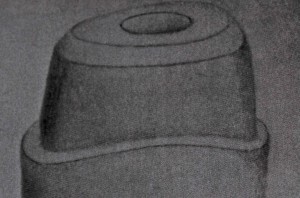 Crowns have been shown to alter the distribution of forces to the roots and should provide a bracing or casing acton to the tooth referred to as the ferrule effect. (As seen in the upper part of picture above.)
Crowns have been shown to alter the distribution of forces to the roots and should provide a bracing or casing acton to the tooth referred to as the ferrule effect. (As seen in the upper part of picture above.)
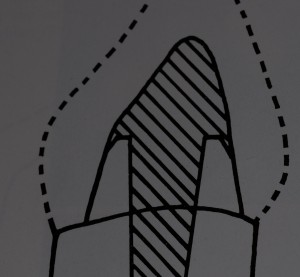 Factors that may effect these restorations include crown design.
Factors that may effect these restorations include crown design.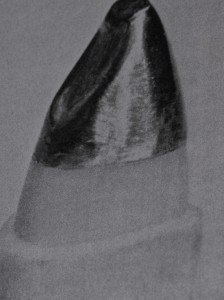 A ferrel effect has been defined by a 360° metal crown collar surrounding parallel walls of tooth structure.
A ferrel effect has been defined by a 360° metal crown collar surrounding parallel walls of tooth structure. This effect has been shown to greatly improve fracture resistance.
This effect has been shown to greatly improve fracture resistance.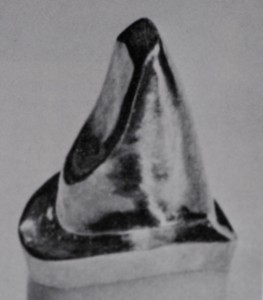 This crown sub-structure has been found to have a significant effect on stress distribution. The ferrule effect helps to unite different portions of the tooth while under load. The ferrule effect acts as an anti-rotatory device and maintains a cement seal.
This crown sub-structure has been found to have a significant effect on stress distribution. The ferrule effect helps to unite different portions of the tooth while under load. The ferrule effect acts as an anti-rotatory device and maintains a cement seal. This is a stone dye that demonstrates Dr. Glassman’s careful attention to the detail required to shape a tooth into a ferrule bevel design – hence protecting your tooth in the future. Patients should expect this from their dentists. This is the difference between mechanics and “sculpture.”
This is a stone dye that demonstrates Dr. Glassman’s careful attention to the detail required to shape a tooth into a ferrule bevel design – hence protecting your tooth in the future. Patients should expect this from their dentists. This is the difference between mechanics and “sculpture.”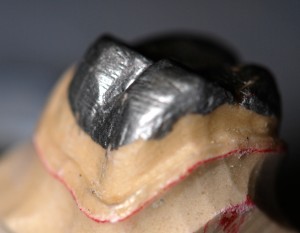 This is why Dr. Glassman works with 6X power magnification for all cases. Patients should count on their dentists to see things well. Magnification brings the future into the present. If you ever wondered what’s taking so long when your dentist is drilling, now you can appreciate the necessary design elements that should be reflected in the tooth preparation, then seen in the impression of the tooth and finally reflected in the casting of a proper crown. Such a crown will prevent your tooth from breaking – that’s the point.
This is why Dr. Glassman works with 6X power magnification for all cases. Patients should count on their dentists to see things well. Magnification brings the future into the present. If you ever wondered what’s taking so long when your dentist is drilling, now you can appreciate the necessary design elements that should be reflected in the tooth preparation, then seen in the impression of the tooth and finally reflected in the casting of a proper crown. Such a crown will prevent your tooth from breaking – that’s the point.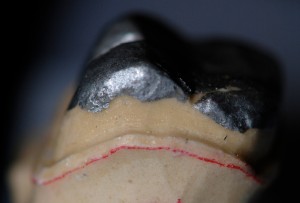 If your laboratory technician sees the effort the dentist makes he makes a similar effort in kind, hence this mutual respect will then equate to a successful crown delivery. This patient consideration is paramount.
If your laboratory technician sees the effort the dentist makes he makes a similar effort in kind, hence this mutual respect will then equate to a successful crown delivery. This patient consideration is paramount.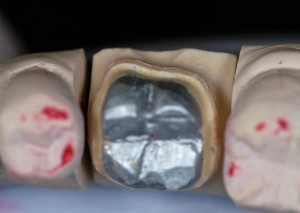 Occlusal view of 360° ferrule bevel. Ask your dentist to see the model work of his impressions of your teeth. It will be evident the effort that was made to design a successful crown.
Occlusal view of 360° ferrule bevel. Ask your dentist to see the model work of his impressions of your teeth. It will be evident the effort that was made to design a successful crown.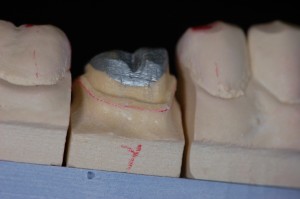 Facial view of 360° ferrule bevel on master dye that your crown will be made from, waxed and cast in nobel precious metals.
Facial view of 360° ferrule bevel on master dye that your crown will be made from, waxed and cast in nobel precious metals.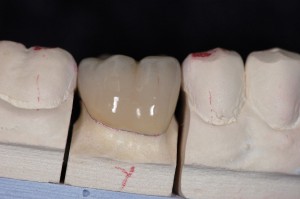 Lab work for porcelain fused to gold crown. This design will unite your tooth while you chew on it – instead of breaking it – that’s important.
Lab work for porcelain fused to gold crown. This design will unite your tooth while you chew on it – instead of breaking it – that’s important.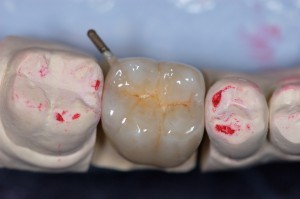 Occlusial view of porcelain fused to gold crown.
Occlusial view of porcelain fused to gold crown.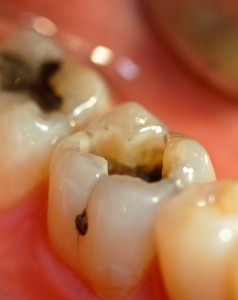 Filling removed from tooth with biting pressure sensitivity.
Filling removed from tooth with biting pressure sensitivity.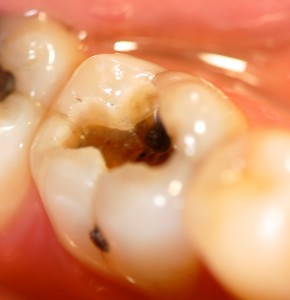 Cusp crack observed / patient informed – TX plan in a bonded filling with future symptoms being monitored.
Cusp crack observed / patient informed – TX plan in a bonded filling with future symptoms being monitored.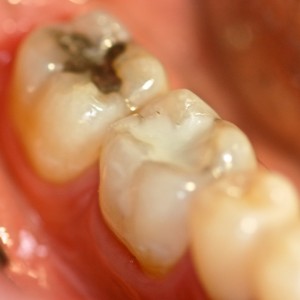 Composite filling potentially reclassified as crown buildup if symptoms persist and crown is necessary.
Composite filling potentially reclassified as crown buildup if symptoms persist and crown is necessary.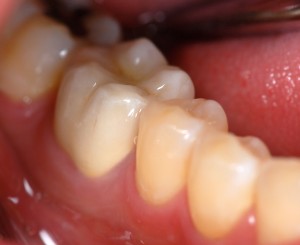 3 months later, when biting pressure symptoms returned the final TX plan required a porcelain fused to gold crown.
3 months later, when biting pressure symptoms returned the final TX plan required a porcelain fused to gold crown.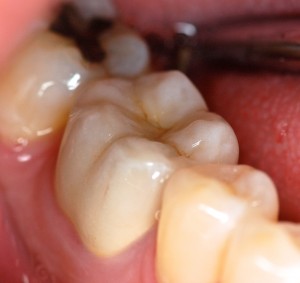 Closeup final restoration – the inherent effort is obvious. Symptoms completely disappeared as this tooth was properly supported by a crown with proper design.
Closeup final restoration – the inherent effort is obvious. Symptoms completely disappeared as this tooth was properly supported by a crown with proper design.

